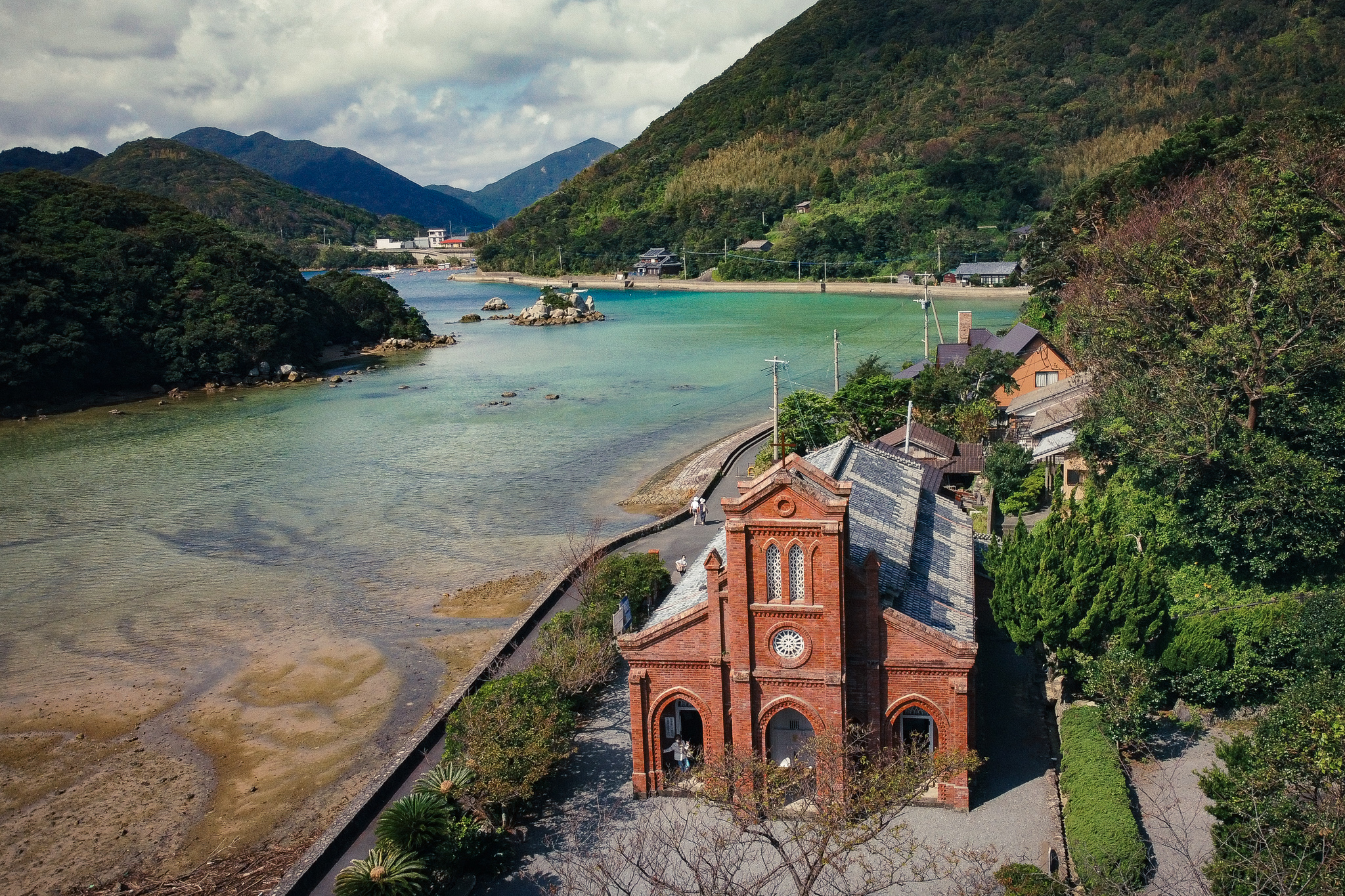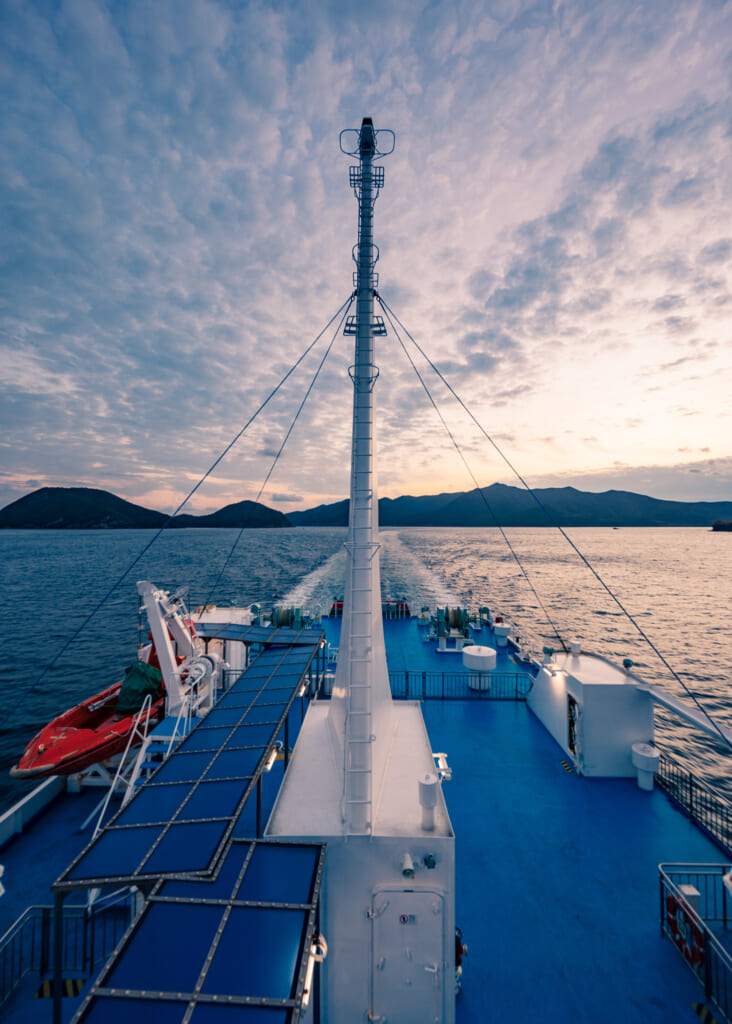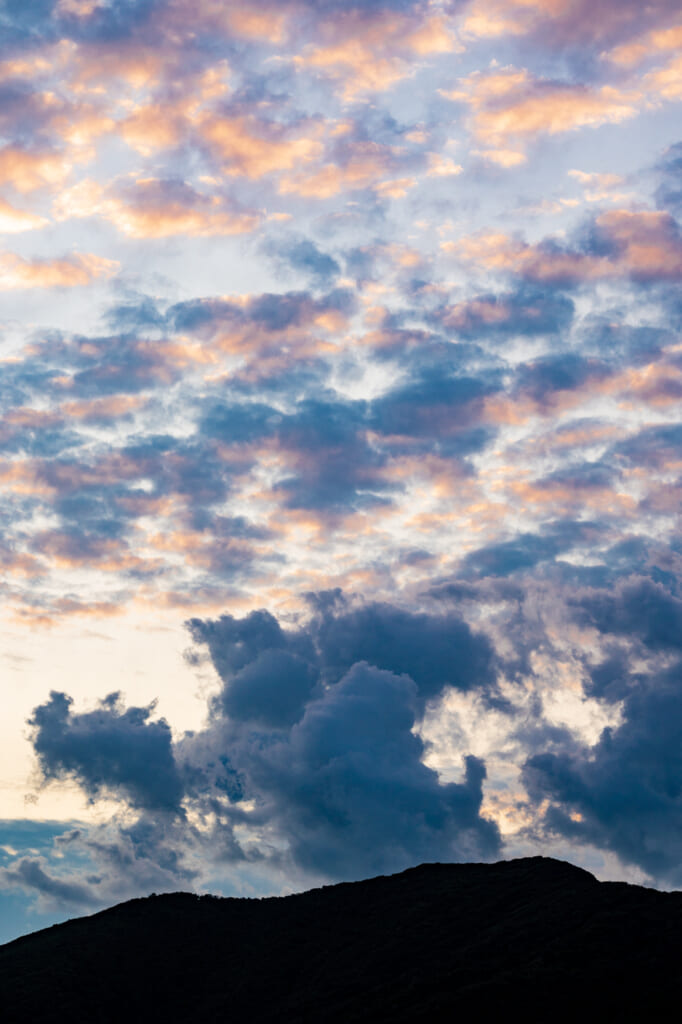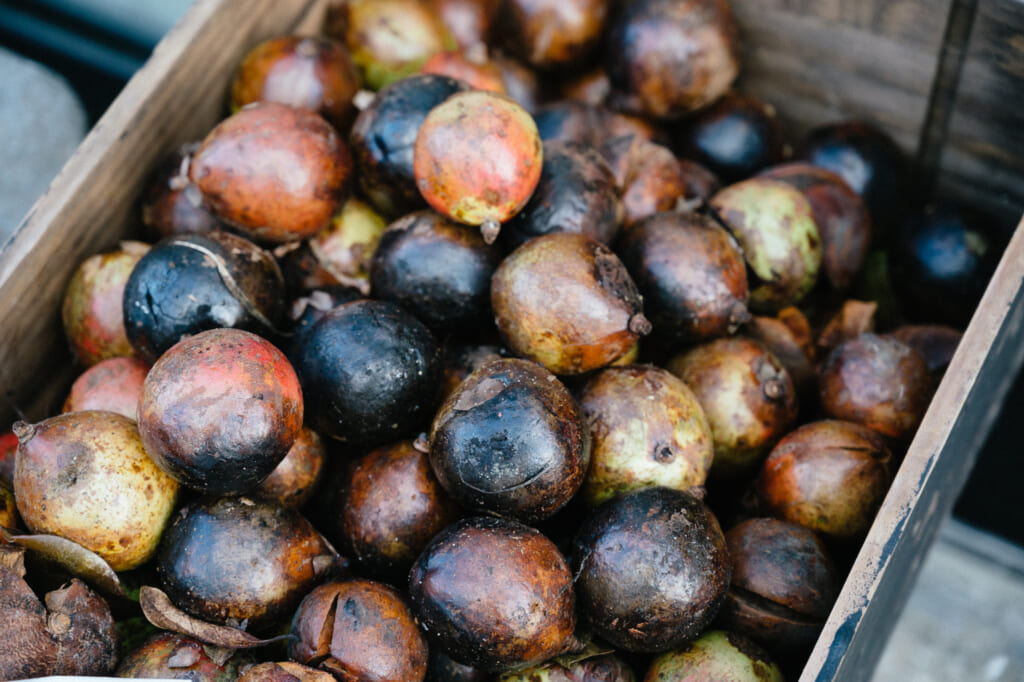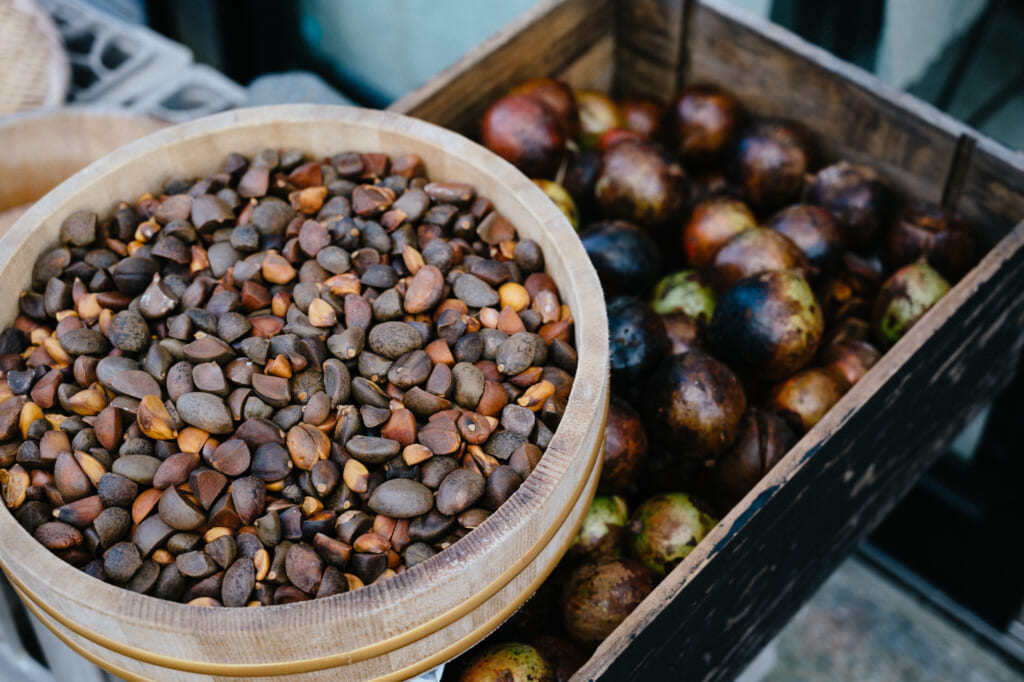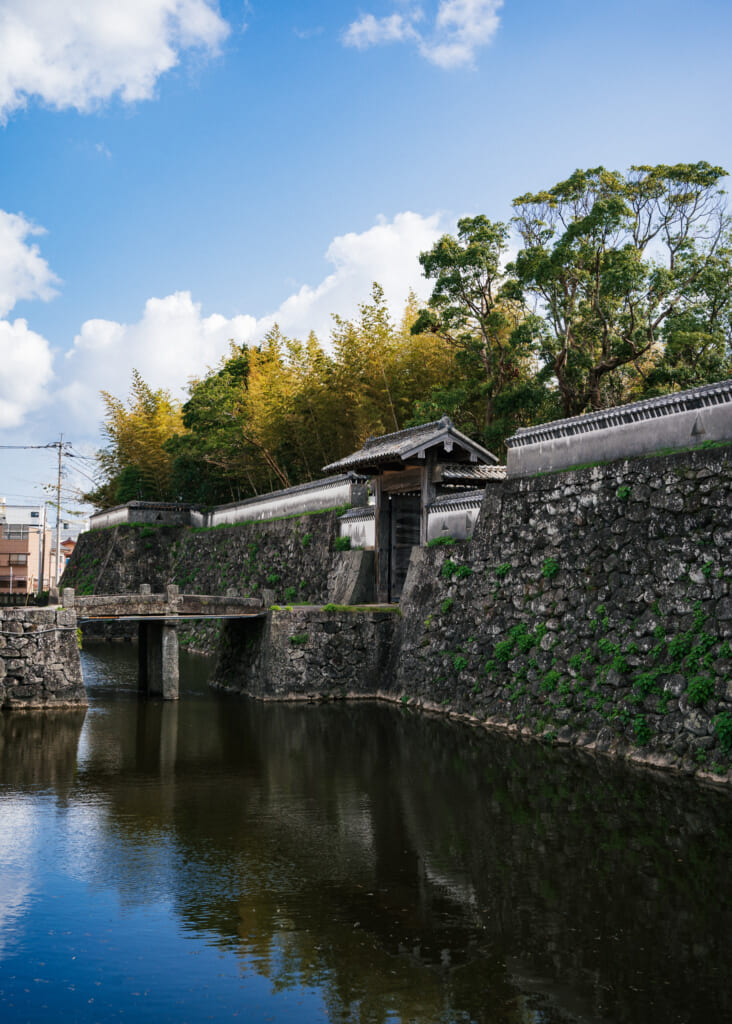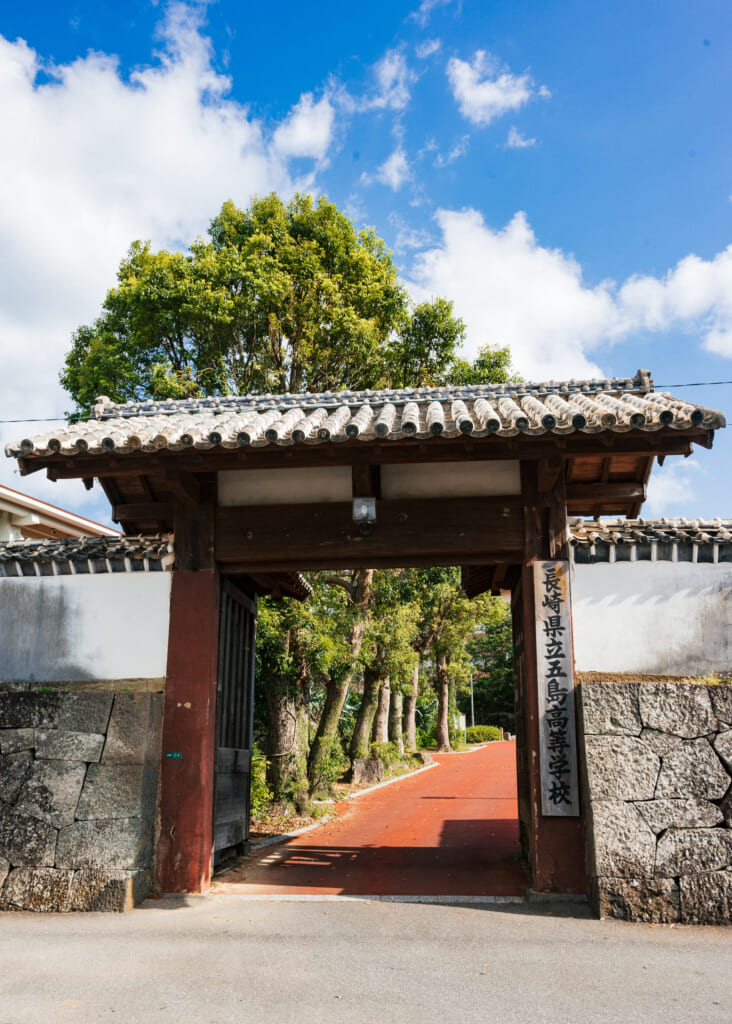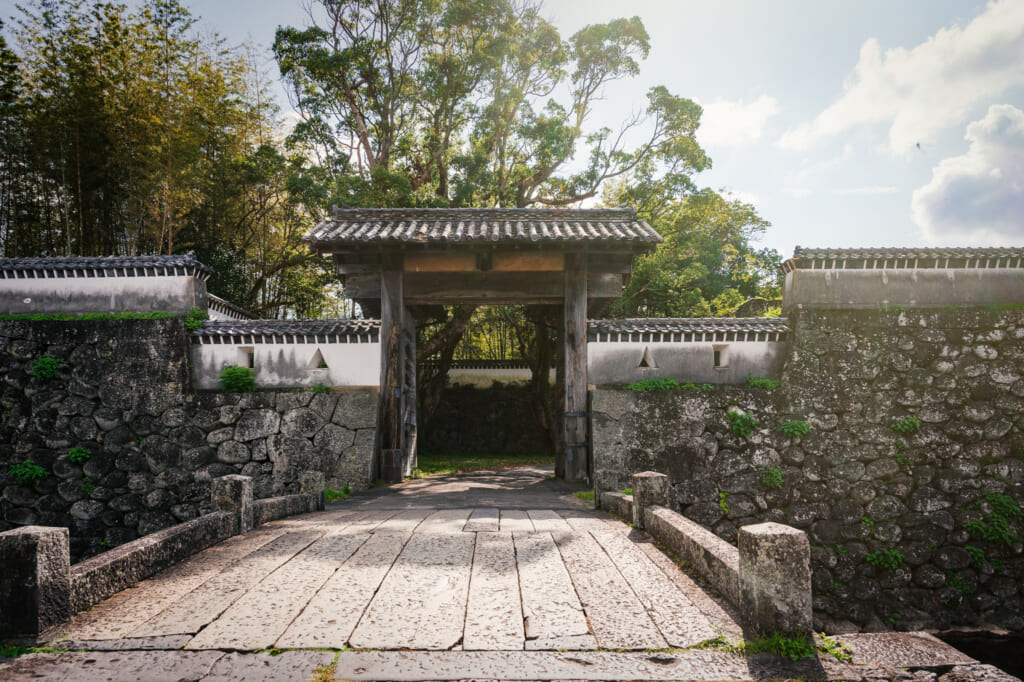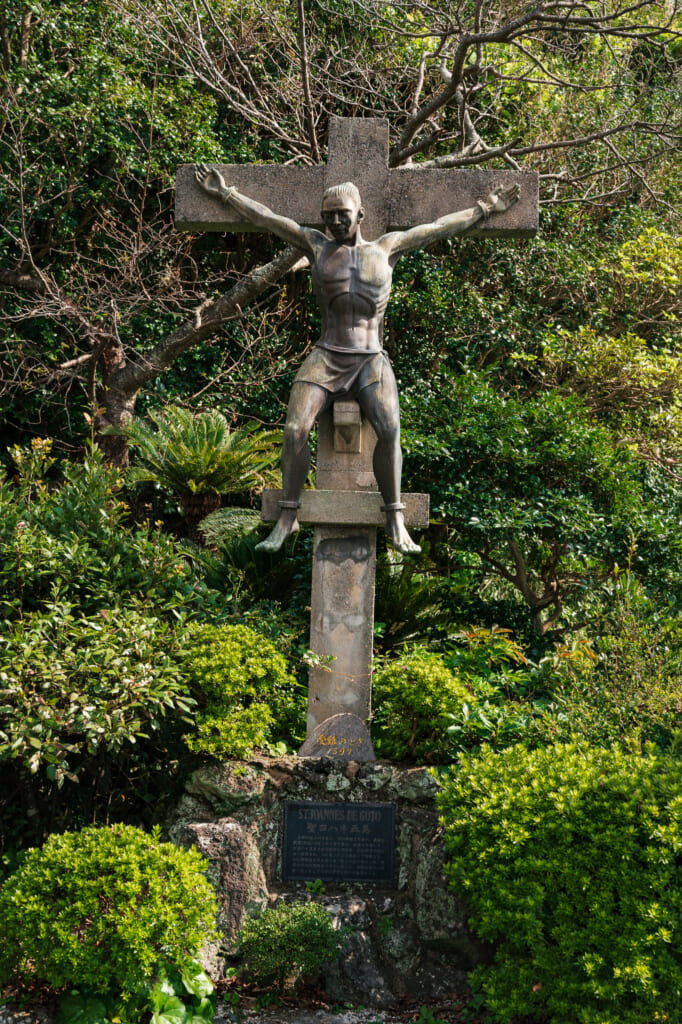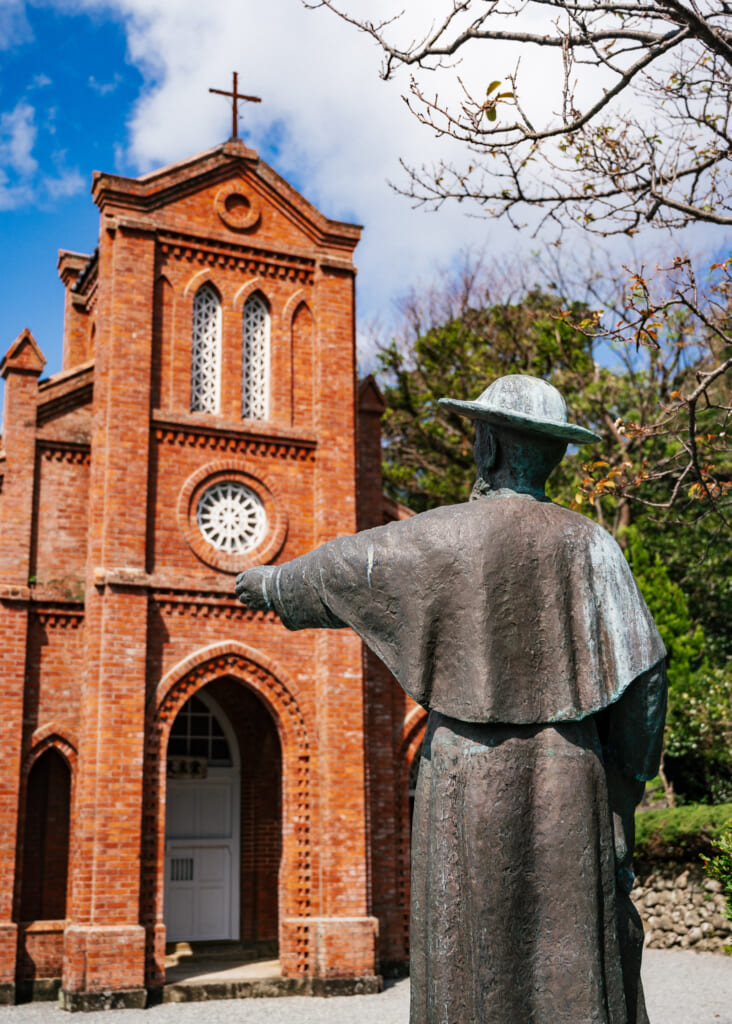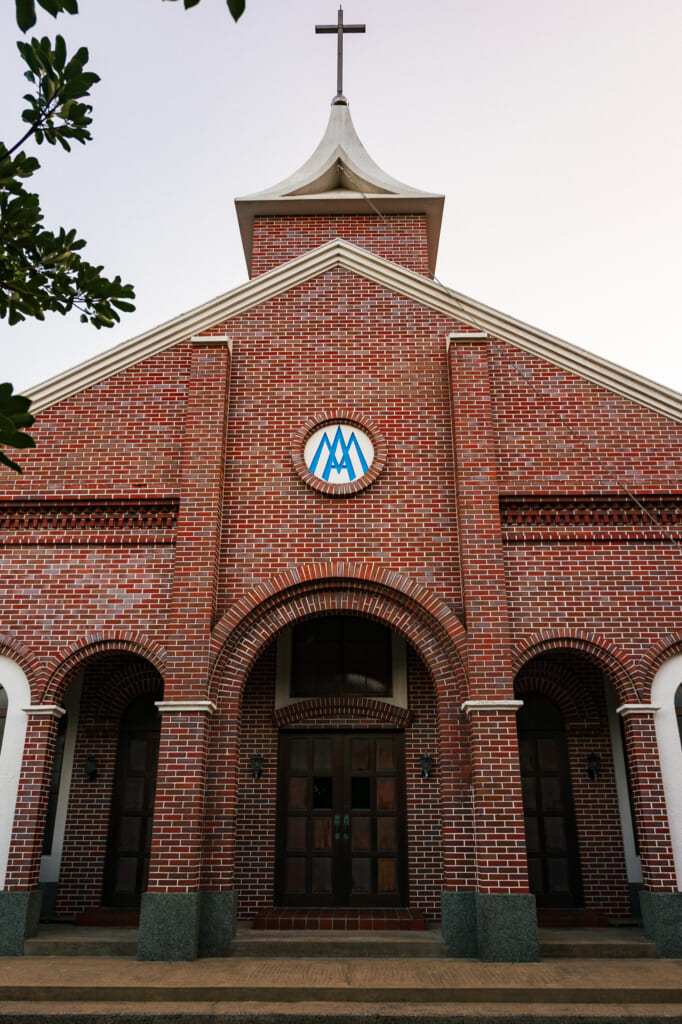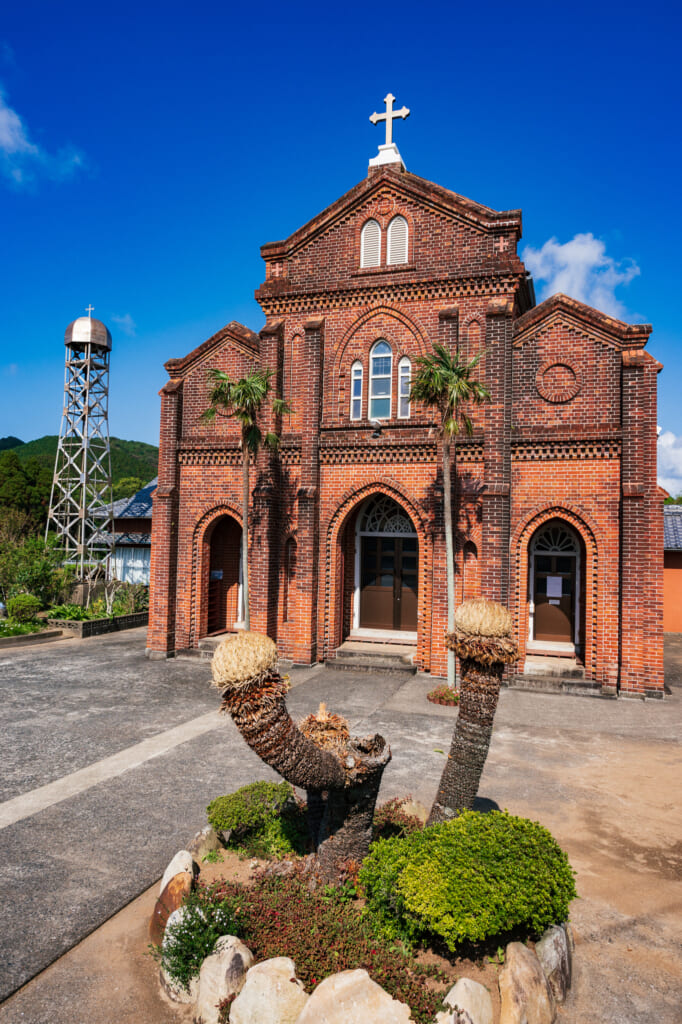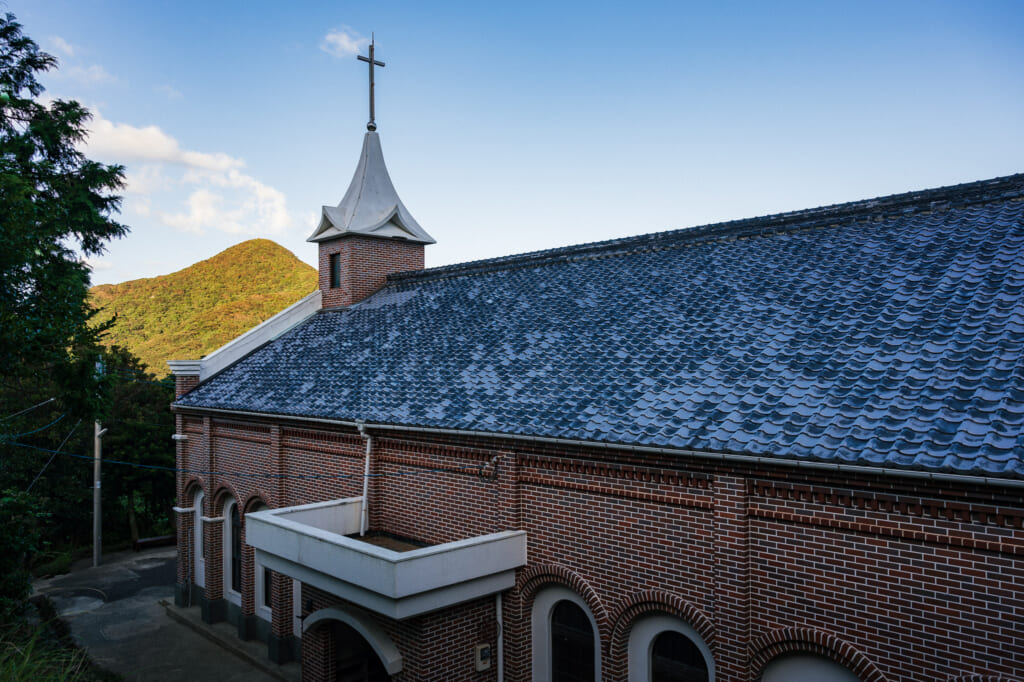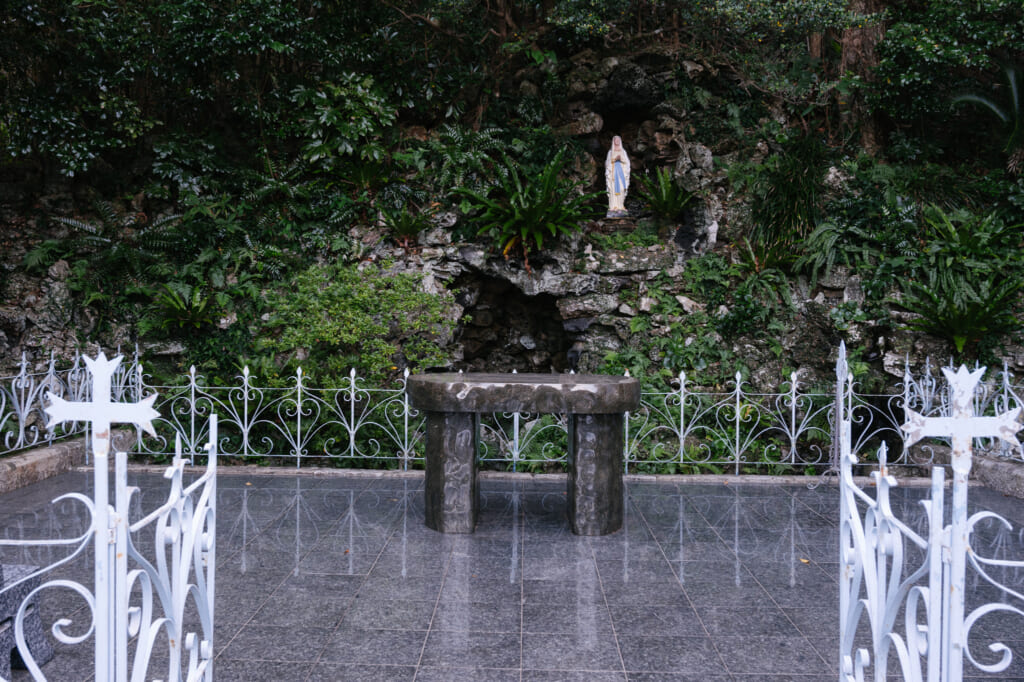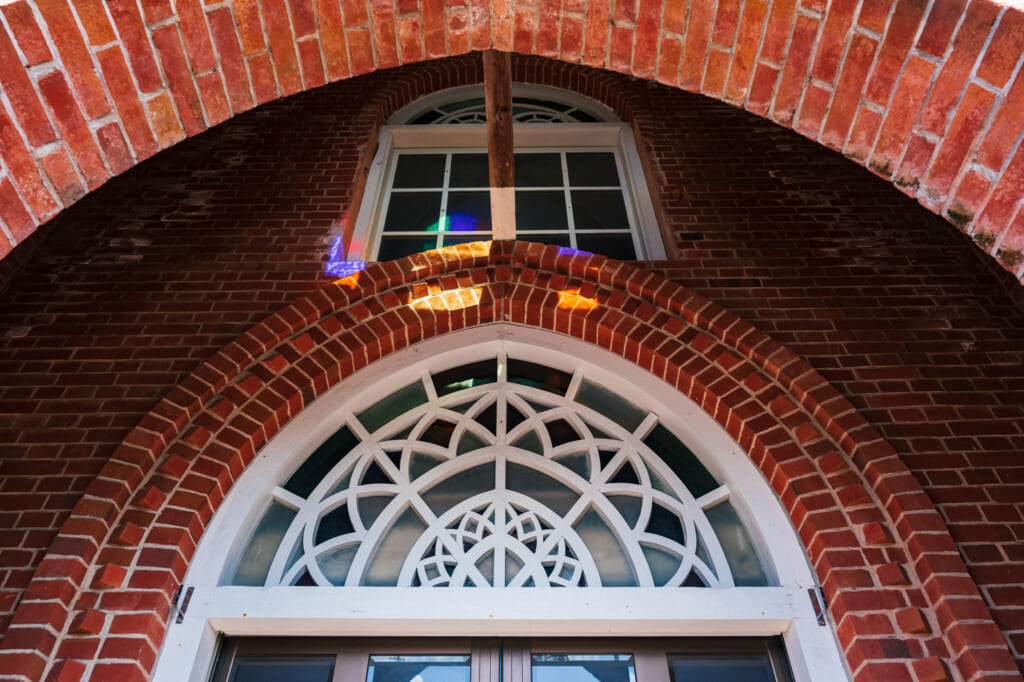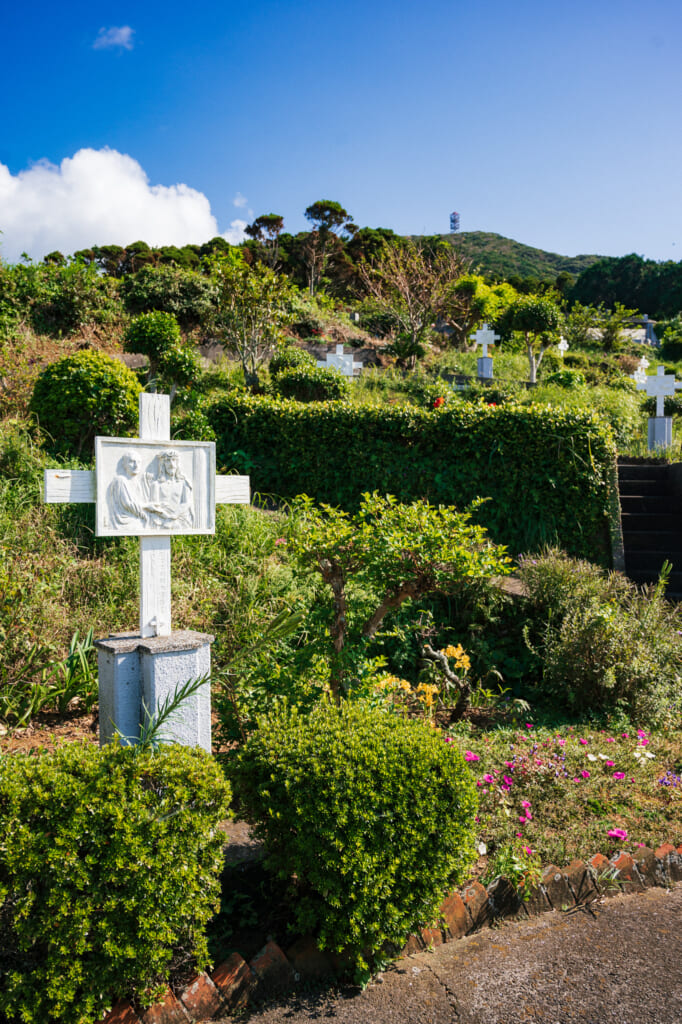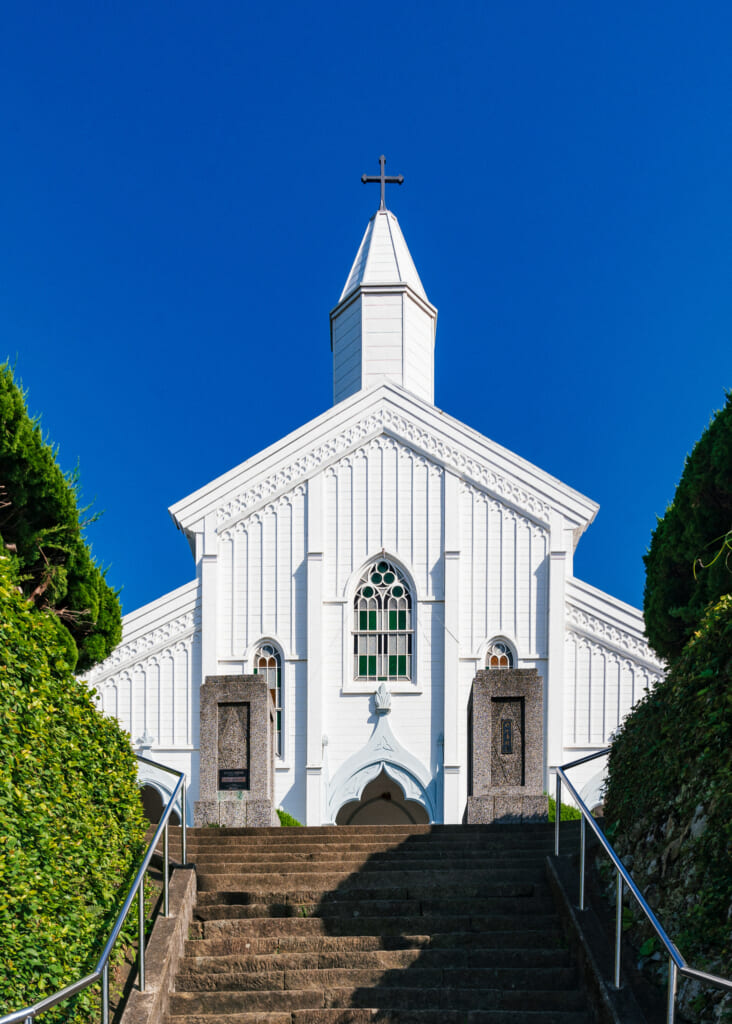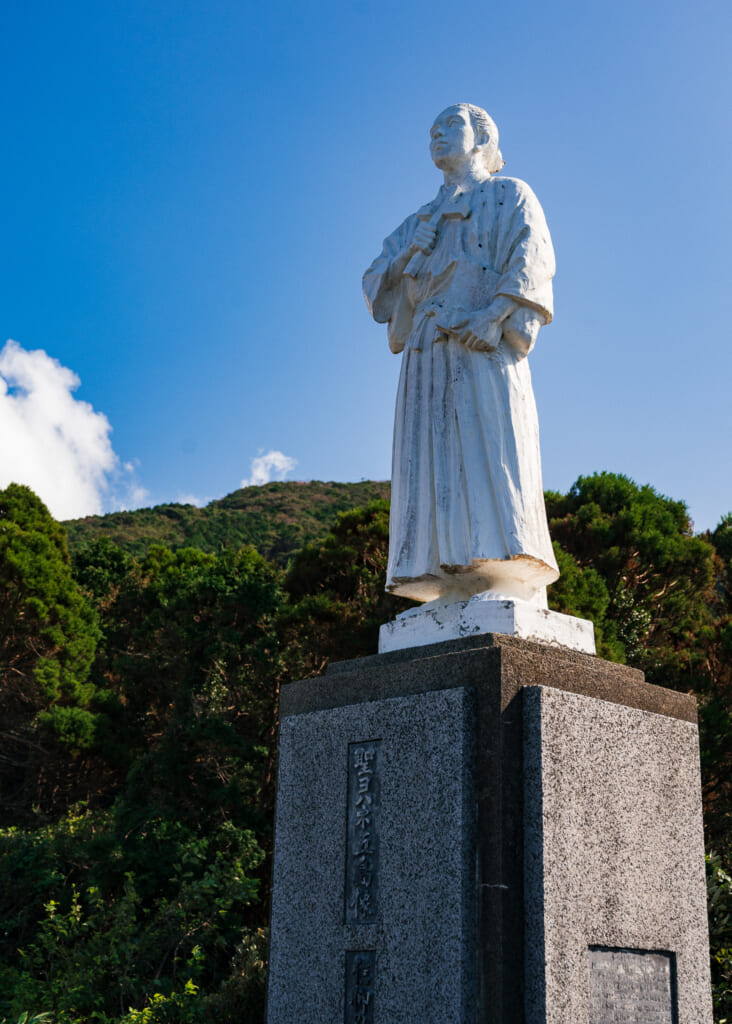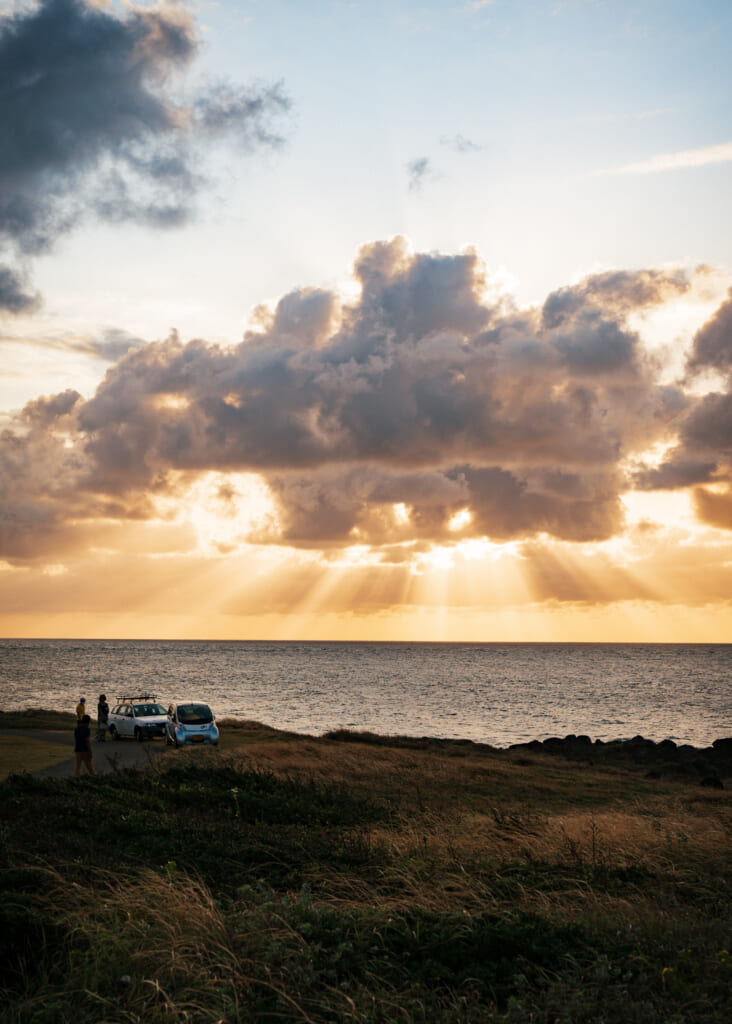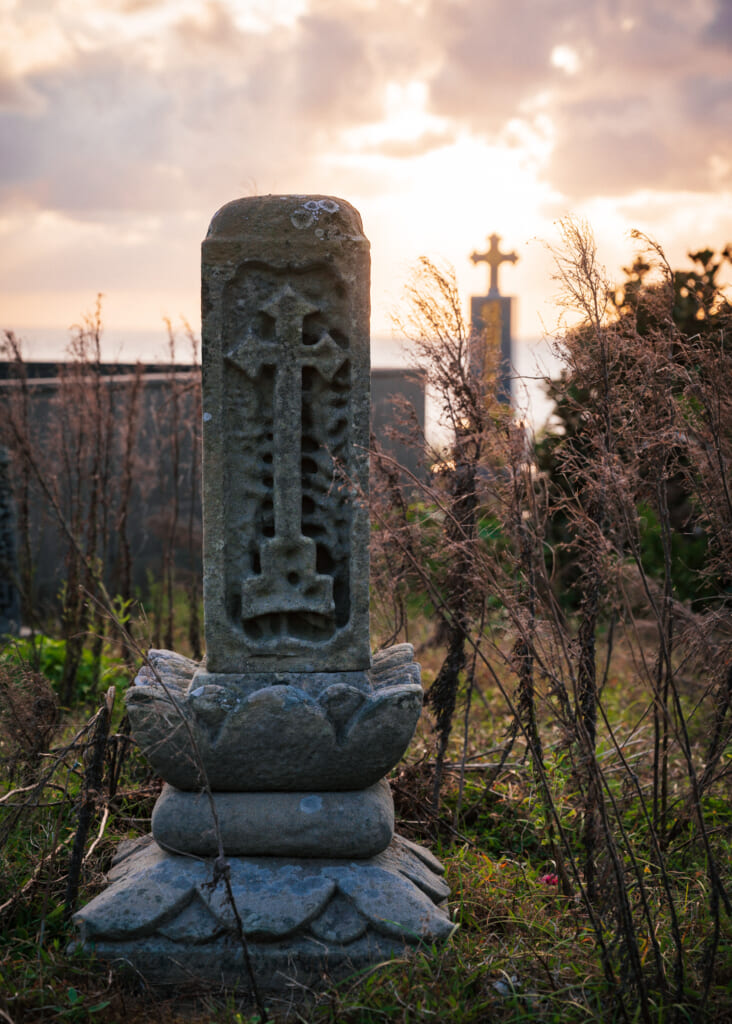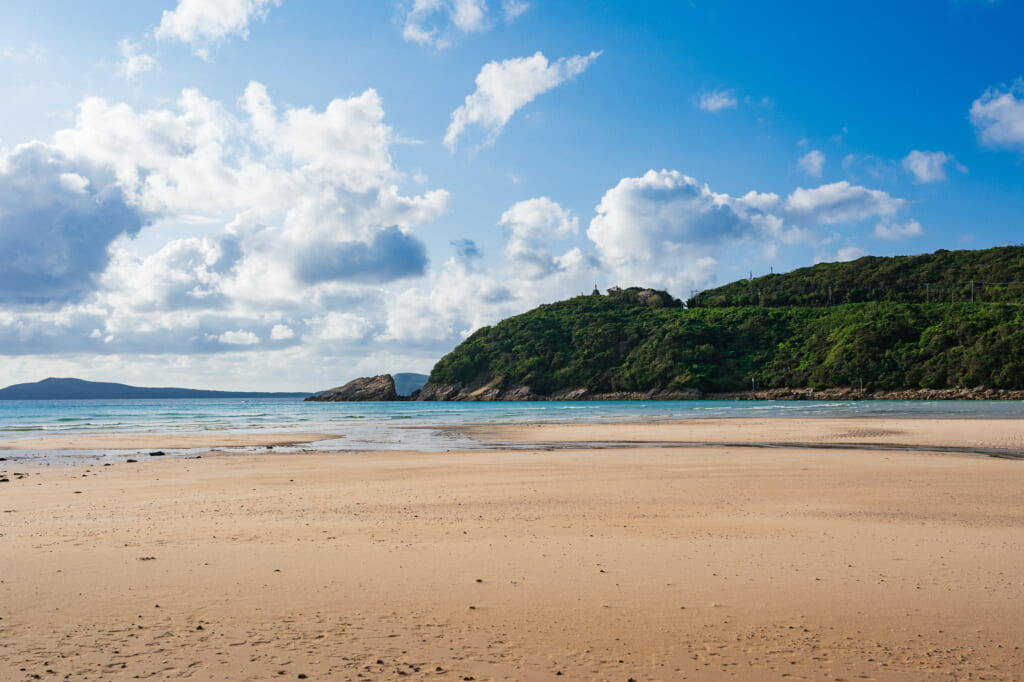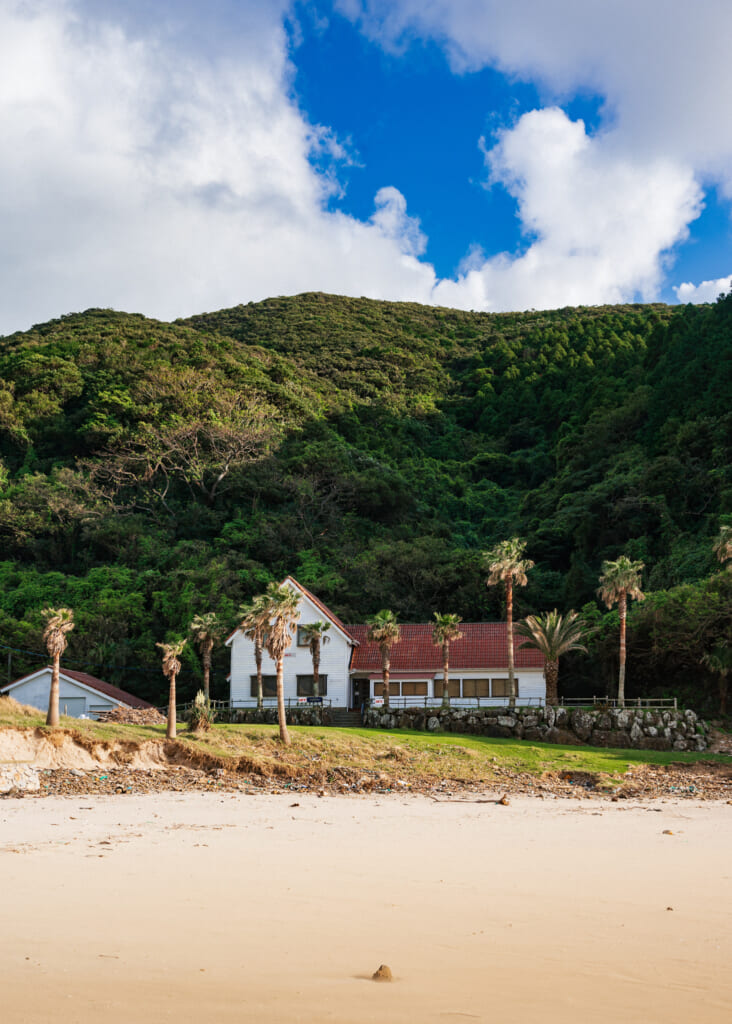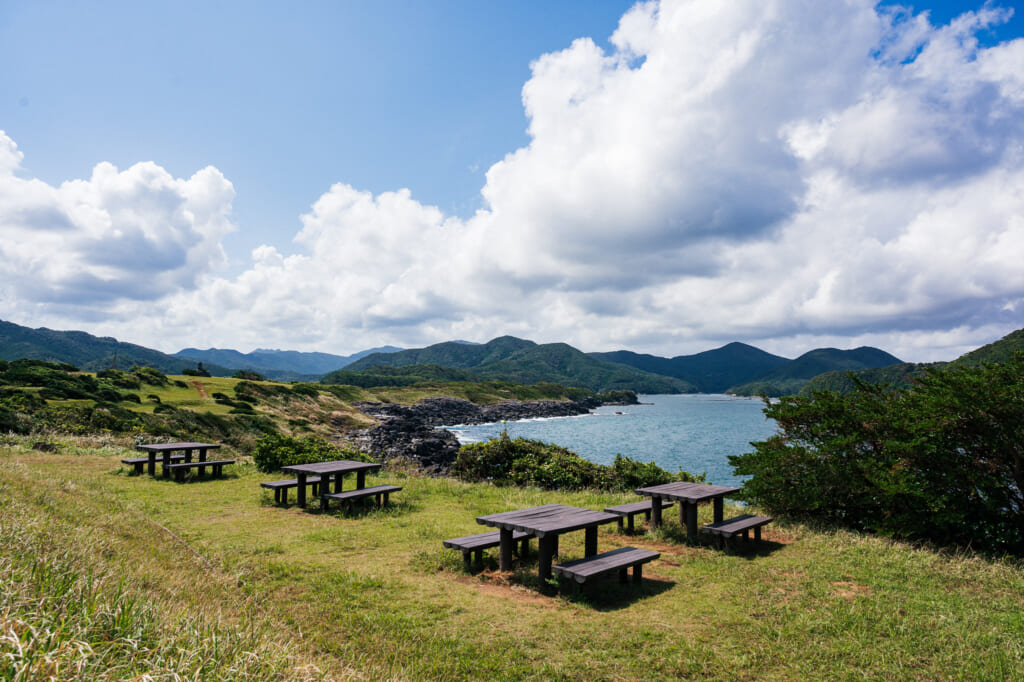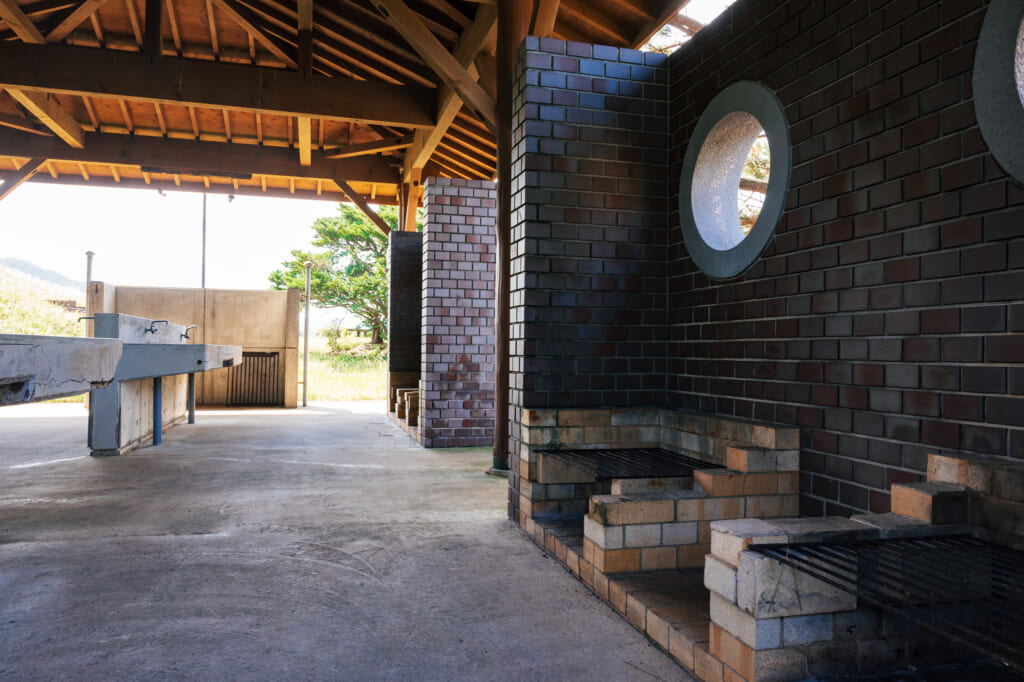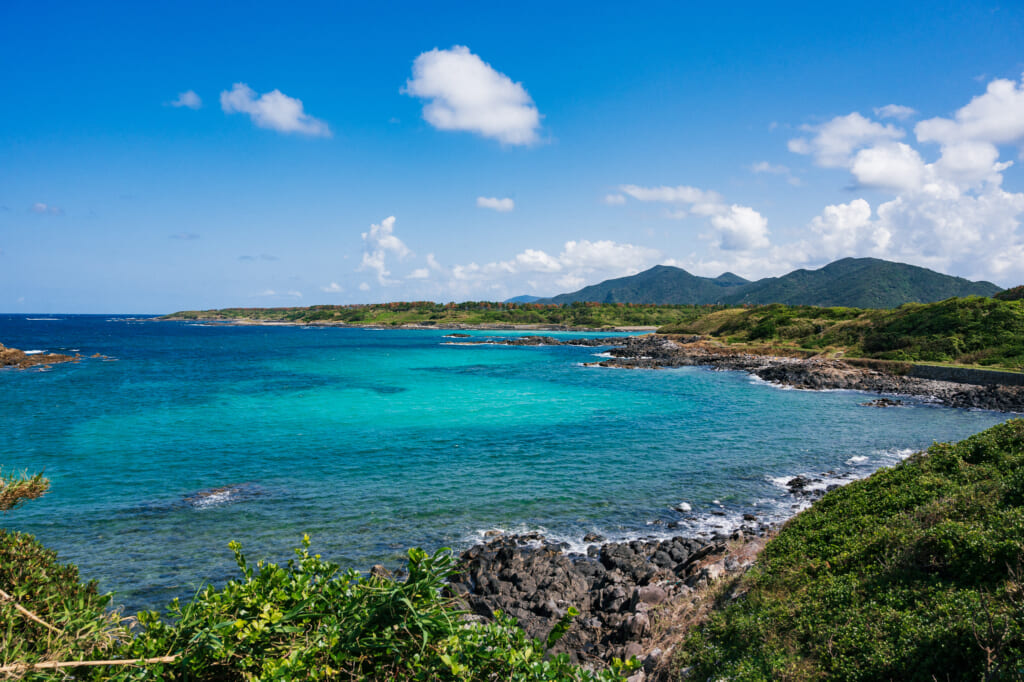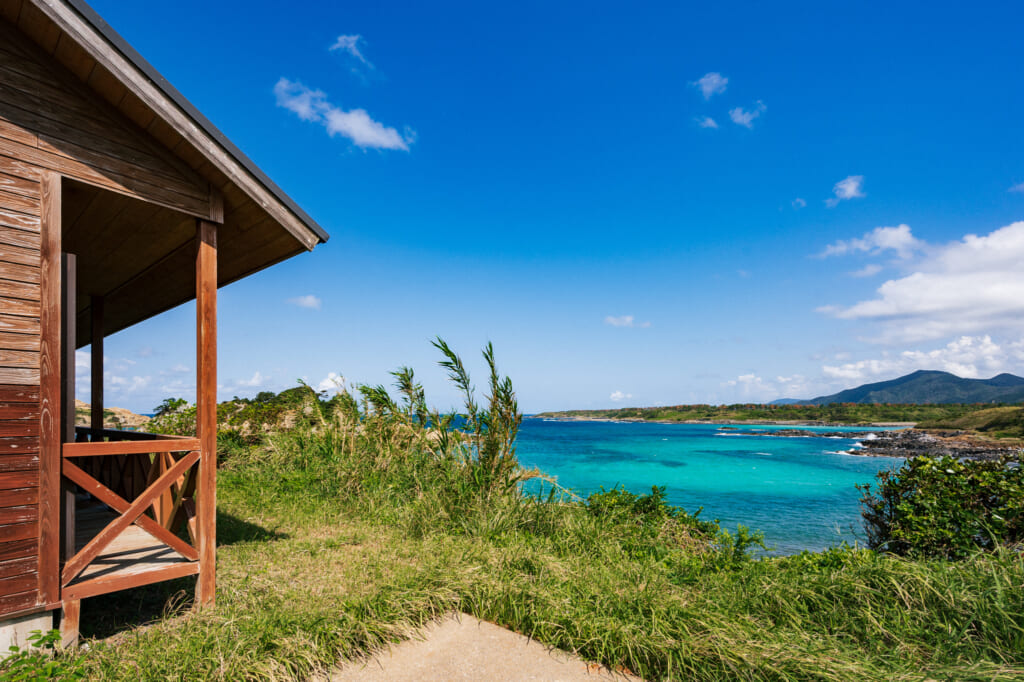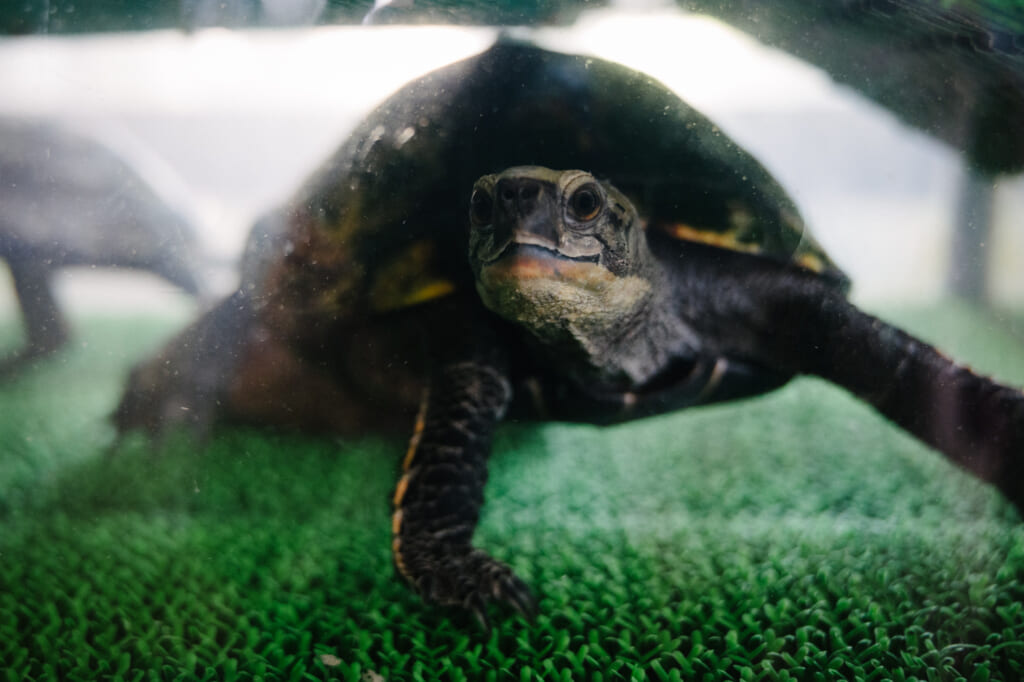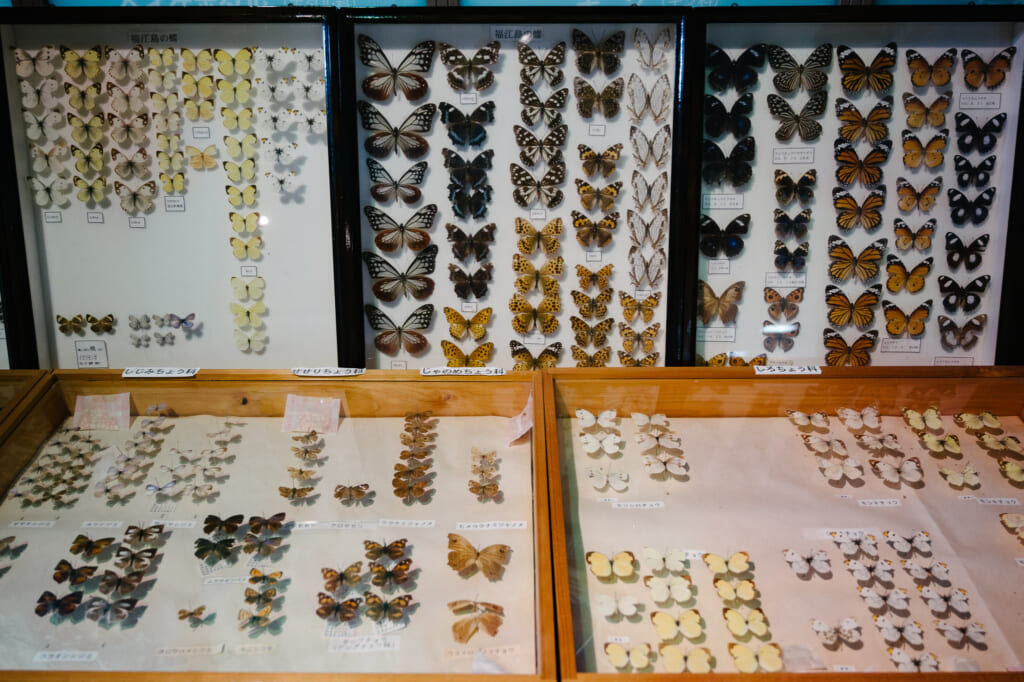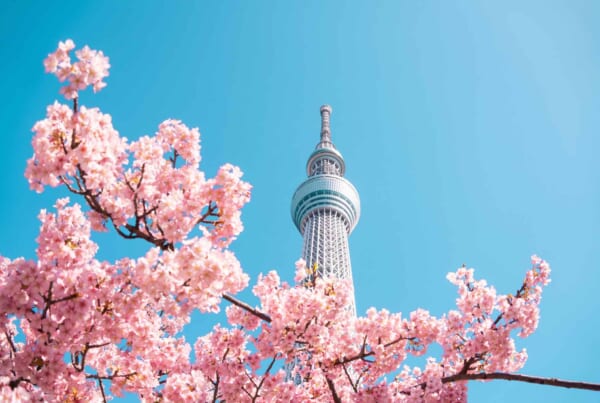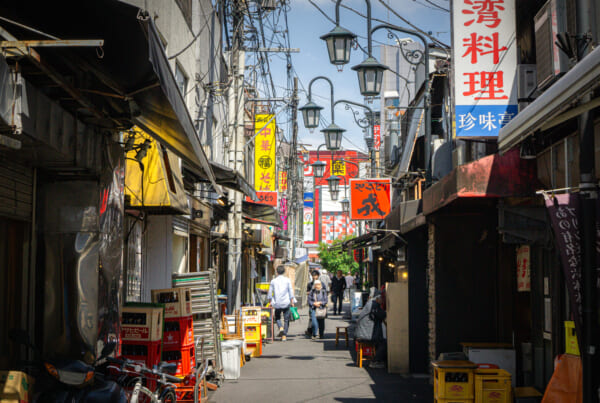For those of us who grew up outside of Japan, the Goto Islands are a place shrouded in an air of mystery. In fact, several of my Japanese friends admit to having little knowledge about the islands, and perhaps this was by design. Many of Goto’s historical inhabitants had good reason not to draw unnecessary attention to their home, preferring to keep it hidden.
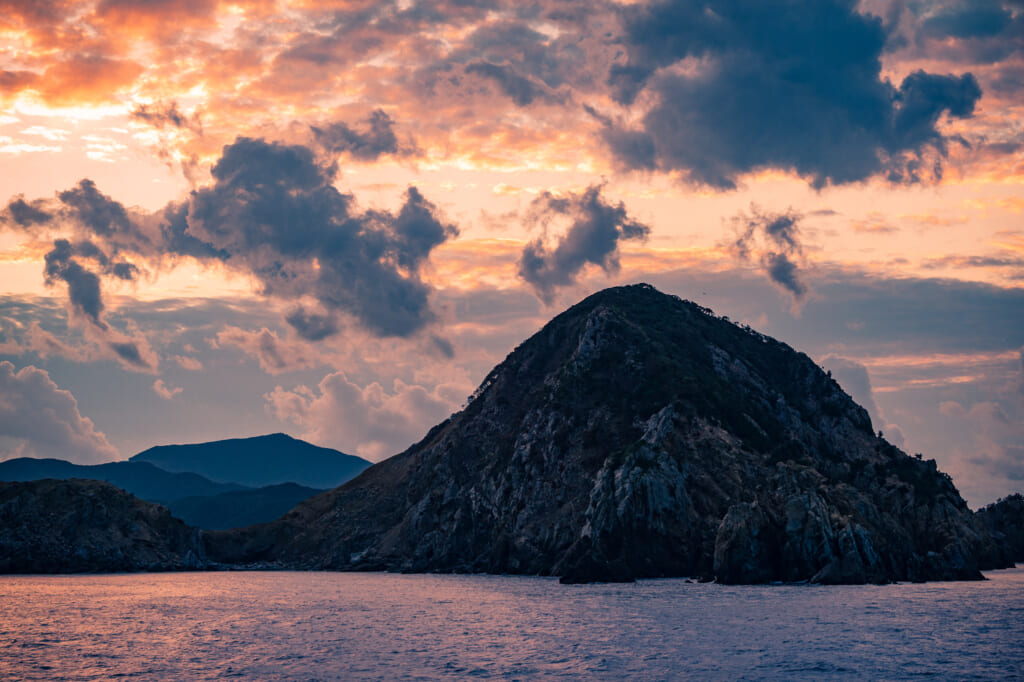
I learned of the existence of the Goto Islands in 2018. I finally watched Martin Scorcese’s film, “Silence,” based on a novel by Shusaku Endo about the persecution of Christians during the Edo Period of Japanese history. Under the guise of farmers, many Christians took advantage of a migration policy to flee Kyushu’s main island for the remote islands of Goto, where they established communities to practice their faith in secret. Thus, they became known as Japan’s “Hidden Christians,” still faithful to their spiritual beliefs but caring for one another by keeping them hidden, a practice that continued for nearly three centuries.
I relayed this story to my host from the Goto City Tourism bureau. Because of the film, I told him, I was inspired to visit the Goto Islands. A slight grin crossed his face as he explained that indeed, “Silence” was set in Goto and other parts of Nagasaki Prefecture, but it was filmed entirely in Taiwan.
Far from discouraged by this revelation, I spent the next few days discovering what the real Goto Islands had to offer. In these early autumn days, the weather was still very summer-like, with warm, humid breezes blowing off the impossibly blue ocean. My partner-in-crime was Olivier, a French national working for the Goto City Tourism office. Together, in a little electric automobile, we traversed Fukue Island, helping me unpack Goto’s rich history and breathe in its stunning scenery.
The Geography and Ecology of Goto
The Goto Islands are located off the west coast of Japan’s Kyushu Island and are part of Nagasaki Prefecture. Goto literally means “Five Islands,” though, in actuality, there are over 60 of them, the majority uninhabited. The five main islands include Nakadori, Wakamatsu, Naru, Hisaka, and Fukue, the most southern of the five, where Goto city is located.
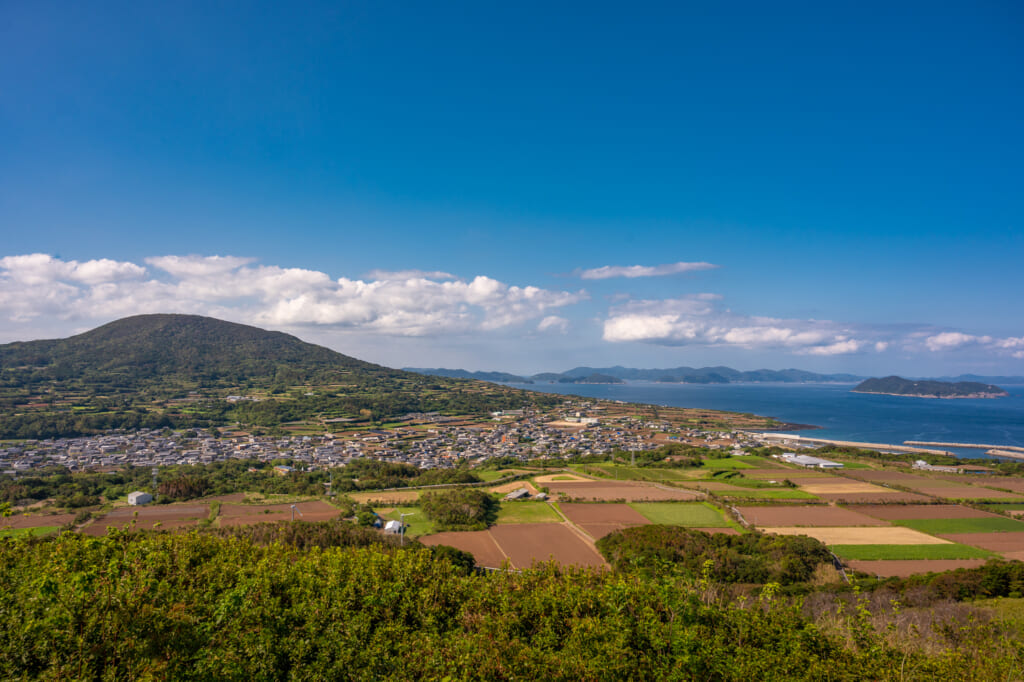
Fukue Island may be compact, but it contains diverse geography and ecology. Mt. Onidake, the largest of several dormant volcanoes on the island, formed much of the eastern part of the island’s geology when it erupted thousands of years ago. The geography is young in earth terms; the mountain peaks are sharp, and the coastlines rugged. Yet the island is also blessed with flatlands, which settlers used for farming. Goto is unusually self-sufficient in terms of food supply, which comes from both its land and sea. Besides the variety of seafood caught by local fishermen, Goto grows its own vegetables and produces its own beef, pork, and chicken.
In terms of ecology, the subtropical climate means that the island receives rain year-round, keeping it green and thriving. Wild camellias grow everywhere, a plant from which natives have learned to harvest and produce the famous Goto tsubaki (camellia) oil, used as a beauty and food product. This healthy oil remains an important export of the island, and its importance to the people might best be understood by the fact that in Japan, Catholic Christians associate camellia, not white roses, with the Virgin Mary.
Because ecology is important to Goto’s residents, there is a strong sense of environmentalism on the islands. Our mode of transportation was an electric car, a tiny but peppy little thing that can seat up to 4 people. Goto has embraced electric vehicles, so there were plenty of locations to charge the battery as we zipped around the island. We topped up our car at the Goto Port or City Hall rapid charging stations while we had a meal in town and at the station opposite Imochiura Church while we toured the church grounds. The rental car staff picked us up from the ferry port and picked the car up from the airport on my way out, so the service was excellent.
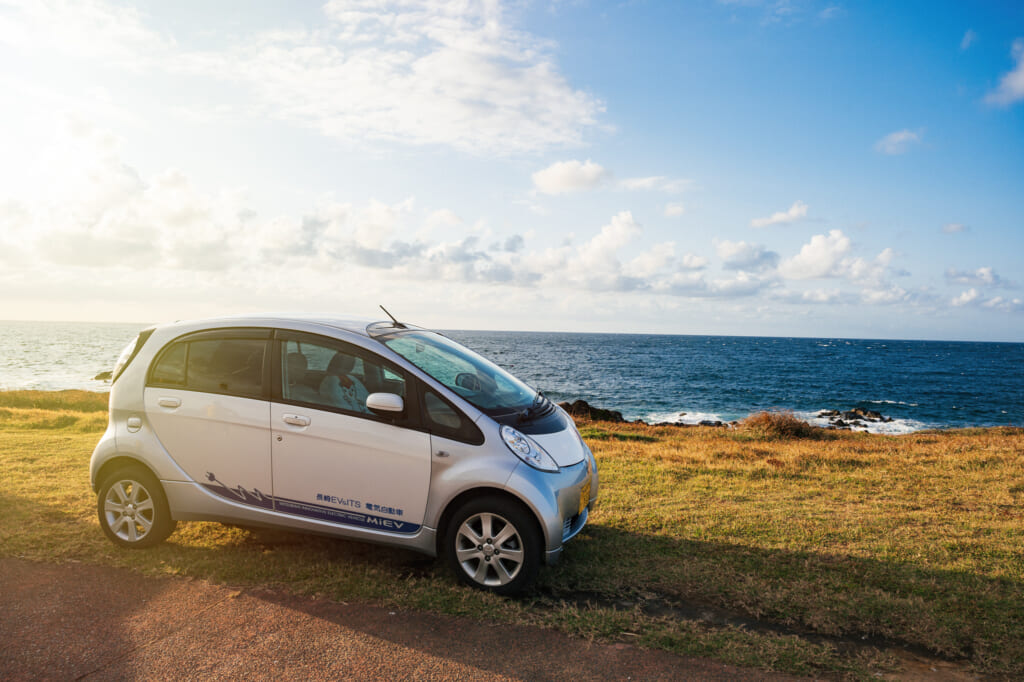
Goto’s Samurai History
Because much of Goto’s history centers on the Hidden Christians, it’s easy to forget that Goto was once home to samurai as well. A walk around the town’s historical center serves as a quick reminder of that part of Goto history. Goto was once a castle town, if only briefly. Ishida-jo, the castle of Goto, was the last of the Japanese castles to be built during the Edo Period. Just 5 years later, the Meiji government took power and ordered the destruction of most of Japan’s castles, including Ishida-jo. Today the castle grounds are home to a lovely Edo-era residence with an attached Japanese garden and the world’s most fortified high school, Goto High School. With apologies to The Ramones, the only thing cooler than Rock ‘n Roll High School is Samurai High School.
Near the castle remains is Buke-yashikidori, the neighborhood where the high ranking samurai once lived. In this area, the sturdy stone walls are topped with rows of large round rocks, the analog version of today’s perimeter burglar alarms. Anyone trying to climb over the walls in the dark of night would likely knock the stones off the wall, creating a clamor and waking the home’s inhabitants, who would be on the scene, swords in hand, faster than you could say “clumsy ninja.” Several of the best-preserved residences are open to visitors, including one that is now the Nizo Yamamoto Art Museum. This museum is dedicated to the work of the Studio Ghibli art director who contributed to such animated masterpieces as “Grave of the Fireflies” and “Princess Mononoke.”
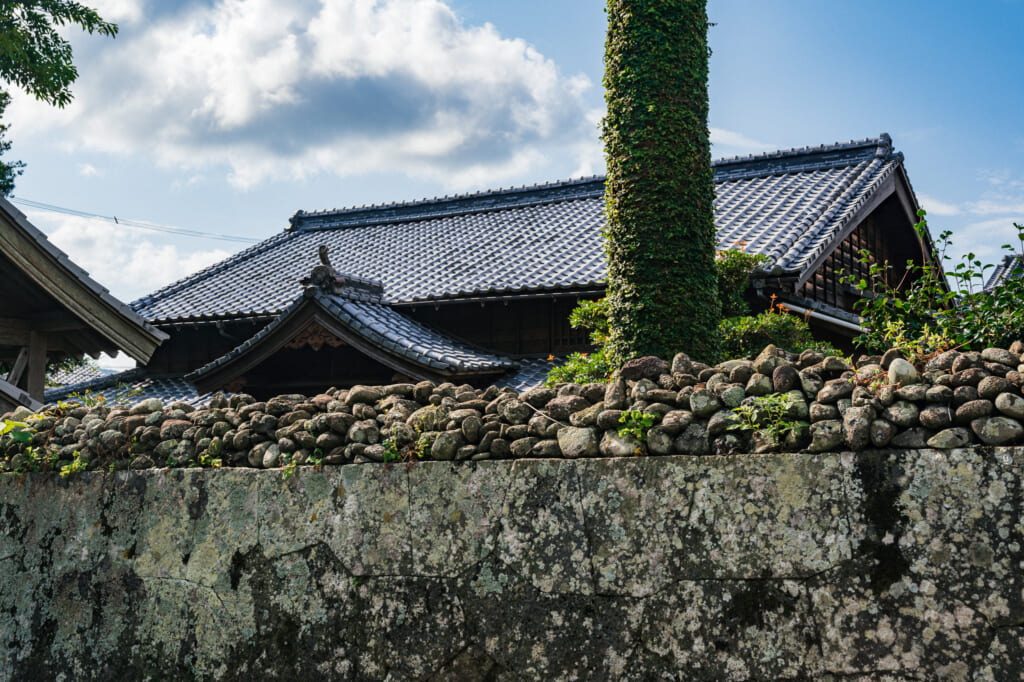
Goto’s Hidden Christians
The “Hidden Christian” history of Goto now overshadows its feudal history, a sort of irony considering how the latter was intent on destroying the former. In 2018, UNESCO recognized many Christian churches and landmarks around Nagasaki as World Heritage sites, monuments of the Hidden Christian cultural traditions secretly kept alive in Japan for nearly three centuries. Because of this recognition, these sites will be maintained for generations of people to visit and learn about this relatively unknown part of Japanese history.
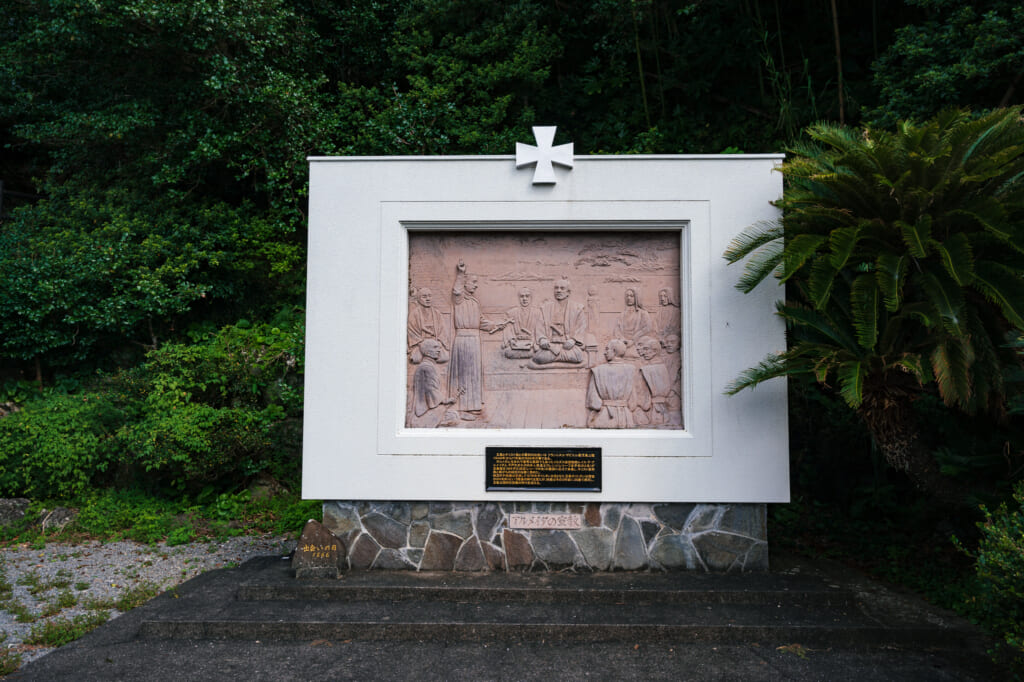
Though there are many historic Christian churches on Fukue, the majority are still used as places of worship, so permission is generally required to enter the buildings. The exception is Dozaki Church, a handsome brick church standing near the entrance to emerald-hued Okuura Bay. It was the first church built on the island when the ban on Christianity was lifted in 1873, constructed by French missionaries for the local Christians. Today, Dozaki Church serves as a museum containing items and documents from the era when Christianity was banned in Japan.
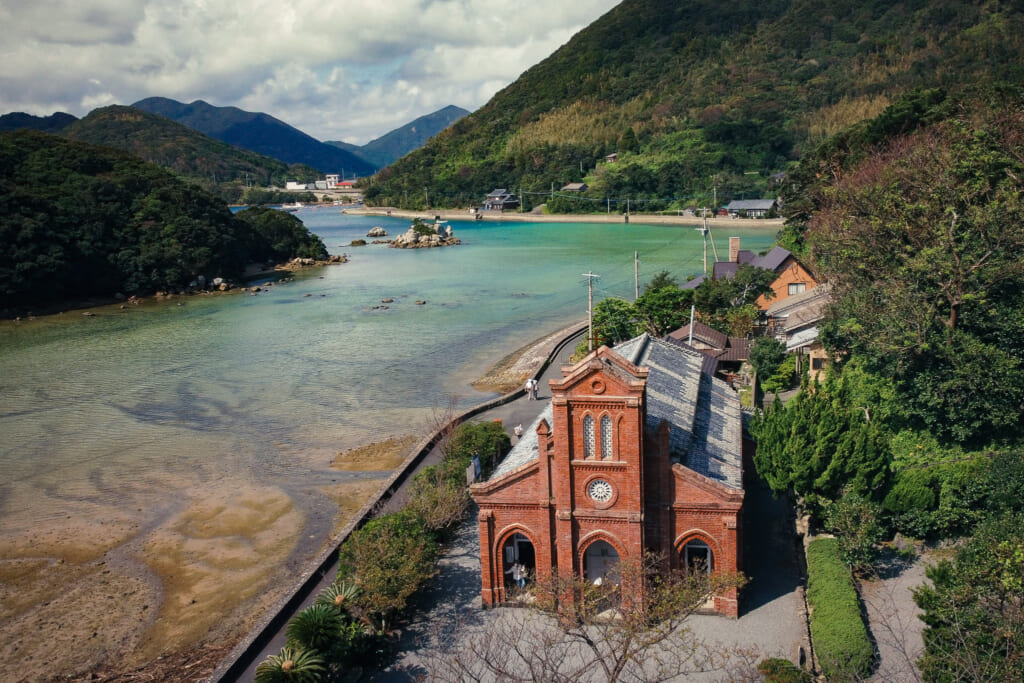
Among the other churches, it is certainly worth even a brief stop at most of them to view their lovely exteriors and surrounding areas, which often contain places of historical importance. Imochiura Church is the brick church you will pass on your way to and from Osezaki Lighthouse. Its grounds contain the first replica of the Our Lady of Lourdes diorama built in Japan.
Kusuhara Church is another stately brick church built around 1910. The Kusuhara Christian community was discovered before the ban on Christianity was lifted, and its members were imprisoned, tortured, or exiled from the island. The original site where many members were jailed is now a memorial just down the road from the church.
Imochiura Church Kusuhara Church
My personal favorite of the Fukue Island churches was Mizunoura Church. Rather than made from brick, Mizunoura is a white, wooden church that stands out boldly on a low hillside. Next to the church is a re-creation of the “Stations of the Cross,” which recounts the story of Jesus’s death on the cross and is based on the Via Dolorosa in Jerusalem, the actual road Jesus followed to his crucifixion. After following the stations, I arrived at the foot of the monument to St. John De Goto, one of the 26 Christian martyrs crucified in Nagasaki after a grueling month-long march from Kyoto. I was moved by the image of his youthful face gazing heavenward; John De Goto was just 19 years old when he willingly faced his own death on the cross.
Slightly above the monument, we stood on the hillside, gazing out over the church toward Gyogasaki Park and the small lighthouse on Tateko Island. The white church stood proudly against the deep blue sea and sky, and my heart caught in my throat for a moment as I pondered the beauty and history of this place.
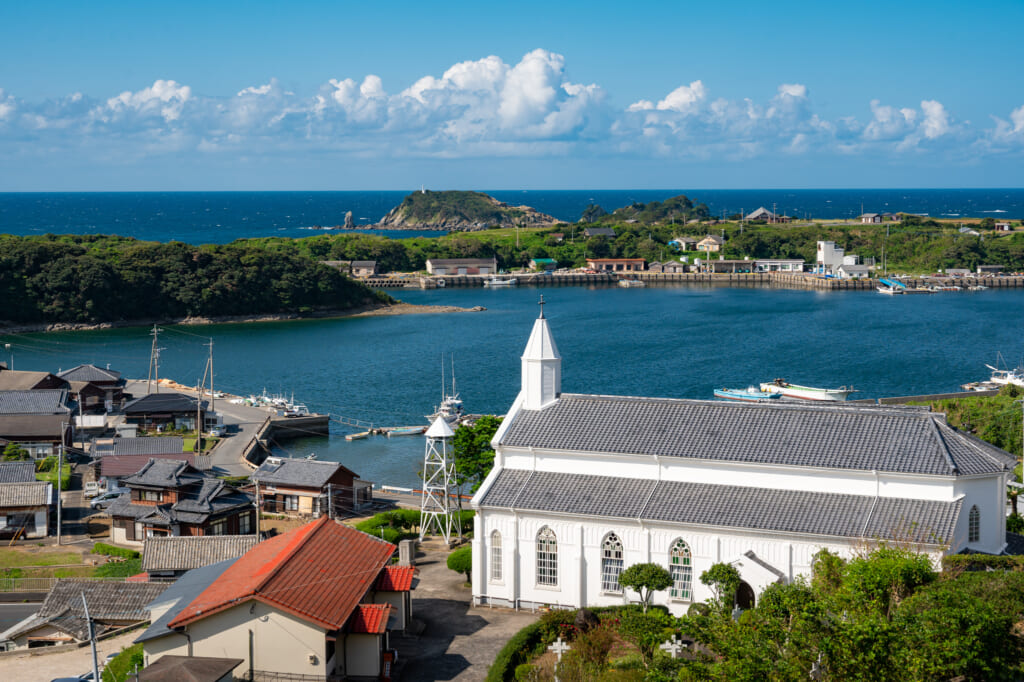
Apart from the churches, there are many cemeteries on the island that memorialize its Hidden Christian history. Fuchinomoto is the most picturesque, silently standing guard over the memories of the faithful Christians buried there against the background of the endless sea and skies. We arrived at Fuchinomoto just before dusk and were treated to an otherworldly sunset that added to the solemn grace of its many tombstones.
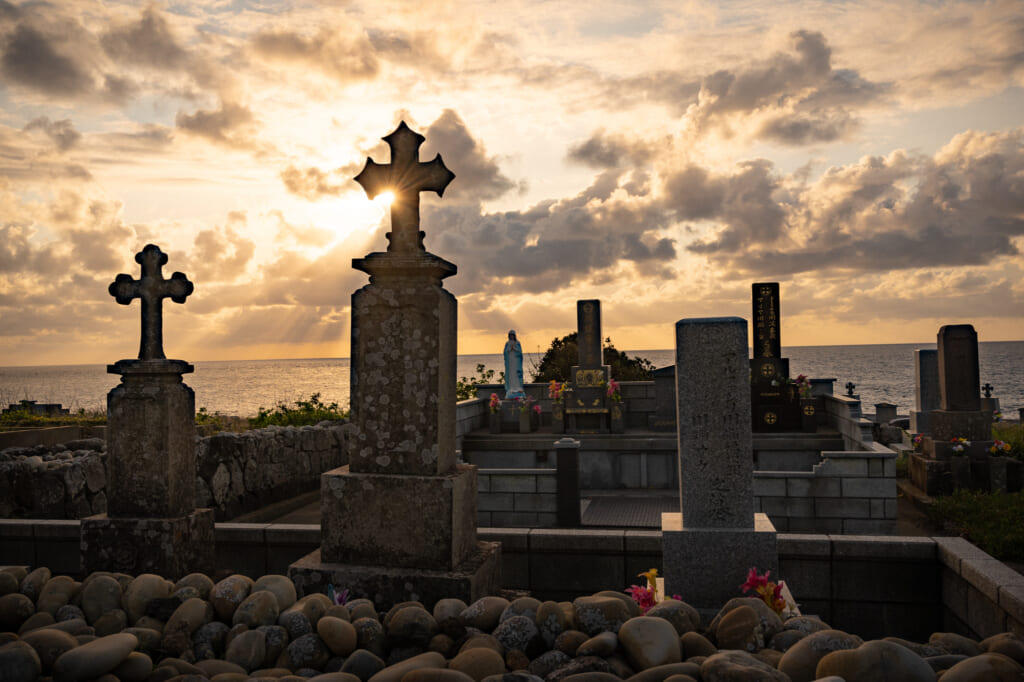
Goto Island Beaches Are Among the Best in Japan
Thousands of years before the Christians arrived on Goto, nature was already forming the mountains and shorelines’ rugged landscapes. Goto’s young geology means there are relatively few beaches, but the ones you find are magnificent.
You can’t mention “Goto” and “beach” in the same sentence without including Takahama Beach, an isolated beauty about a 45-minute drive from central Goto city. This “left coast” beach is ranked as one of Japan’s 100 best beaches both in beauty and for swimming. The gently sloping shoreline creates a safe swimming zone for over 100 meters offshore. Though one of Goto’s most popular beaches, only one other person visited the beach during our visit in early October, though the weather was Hollywood perfect. Because of its popularity, Takahama Beach has full bathroom and shower facilities available year-round and a restaurant open during peak season.
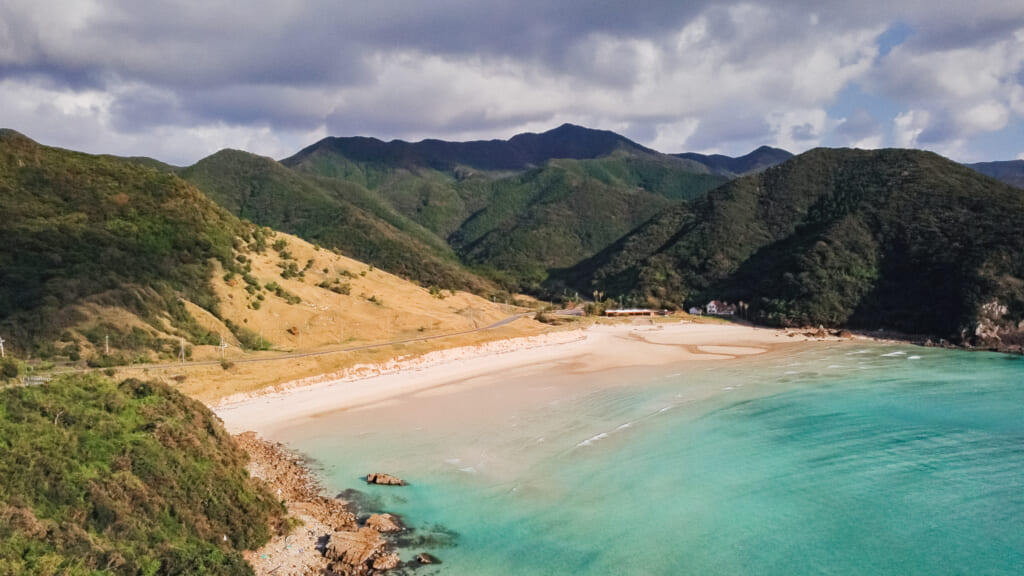
On Fukue’s northern face, you’ll find another popular beach, Hamada Beach. Hamada is smaller than Takahama but more accessible from the city center due to its proximity. Nearby Gyogasaki Park overlooks the beach area and provides camping facilities. Those who enjoy camping in the outdoors will love the amazing views, fresh ocean air, and proximity to the beach.
Fukue’s east coast has the most beach areas. It is on those beaches you’ll be able to experience many of the island’s ocean activities such as sea kayaking, parasailing, and stand up paddleboarding (SUP). Kojushi Beach is another beautiful beach on the east coast with soft sand and cerulean seas. Above the beach, the Goto Tsubaki Bussankan shop sells various local products, including camellia oil products, locally produced salts, and decadent soft ice cream from a local dairy, which is best enjoyed overlooking the beach shared with your favorite person.
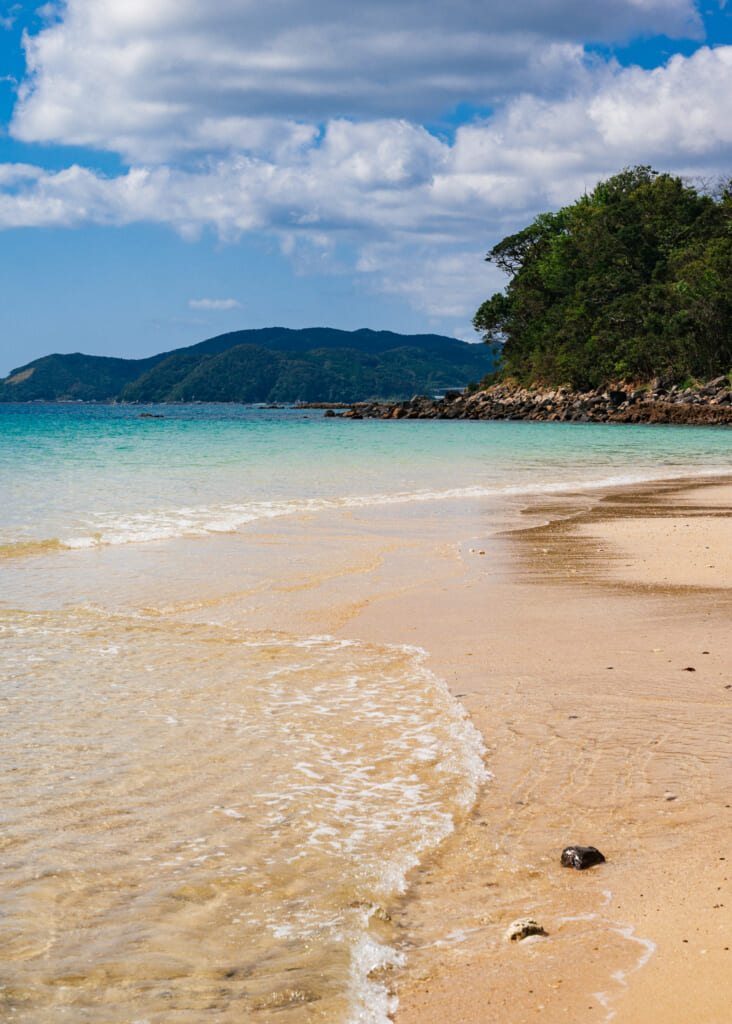
In a more rugged section of the East Coast, we visited the Abunze Visitor Center, a small facility displaying the area’s natural and cultural assets. The coastline here was formed from the eruption of nearby Mt. Onidake and consists of dramatic black lava rock, lush green vegetation, and the deep blue ocean. It isn’t a place for swimming, but an interesting place to explore and learn more about the wildlife and culture of the islands.
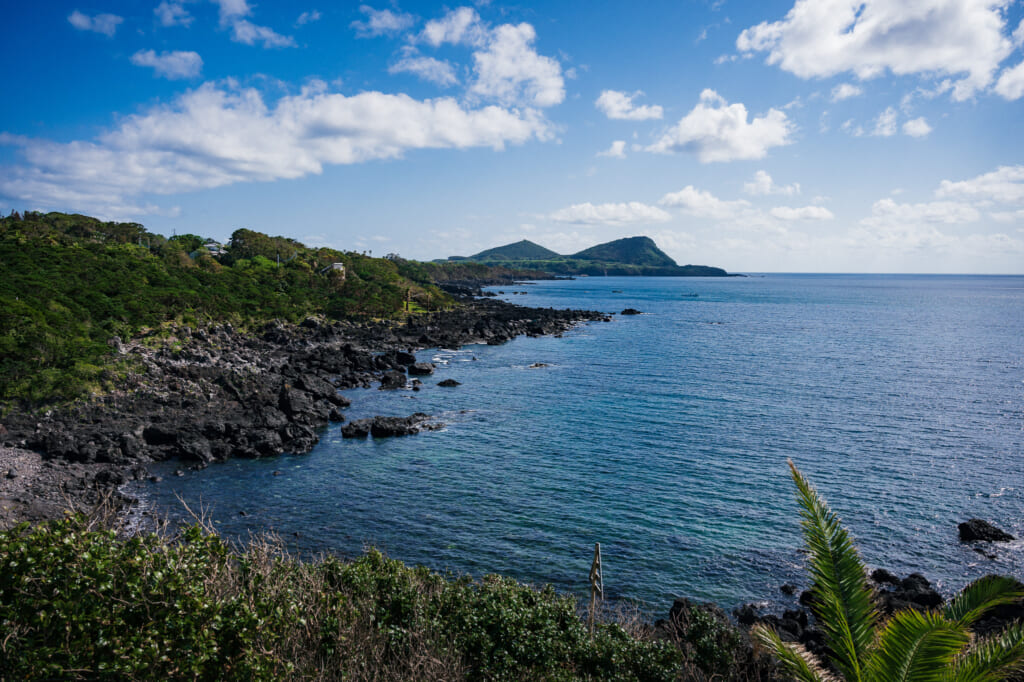
How To Get to the Goto Islands
If it sounds like the Goto Islands are difficult to access, you’d be surprised to find out that you can get all the way from Tokyo to Fukue in just a few hours of travel. Start with a flight from Tokyo to Nagasaki, which takes about an hour and a half. From Nagasaki, you have the option to travel the rest of the way to Fukue by ferry, jetfoil boat, or another airplane. Ferries are the slowest but most economical way to get to the island, though the approach to the island from the open deck of a ferry can be breathtaking by itself. The ferry takes about 3 hours from Nagasaki.
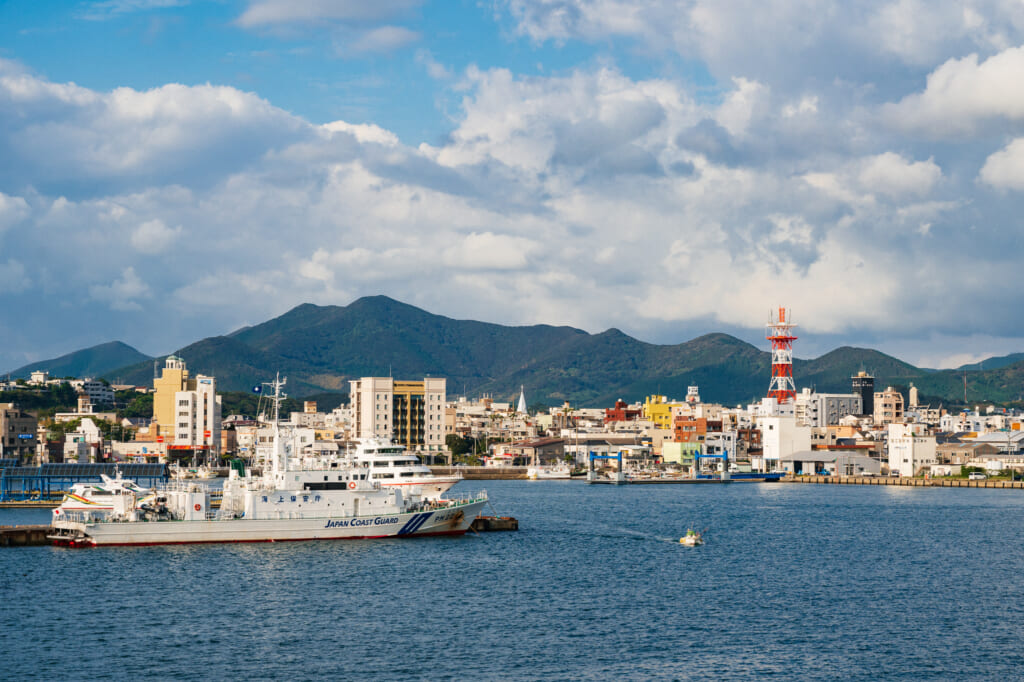
Jetfoil speedboats are faster, taking about 90 minutes each way though you’ll need to stay inside the cabin to keep safe and dry. There are just a few daily flights to and from Fukue via Nagasaki and Fukuoka airports in Kyushu, but you’ll arrive in a matter of minutes.
Sponsored by Goto City
The secrets of the Goto Islands have been kept hidden from the rest of the world for centuries, but with the recent recognition of many Goto locations as UNESCO World Heritage sites, all of that is about to change. Visiting Goto for the first time, I felt like I had landed in a strange new world, a place that seemed both alien and familiar at the same time. And leaving the island after my three-day exploration, I knew that it was a place that I would be called to return to again and again.


